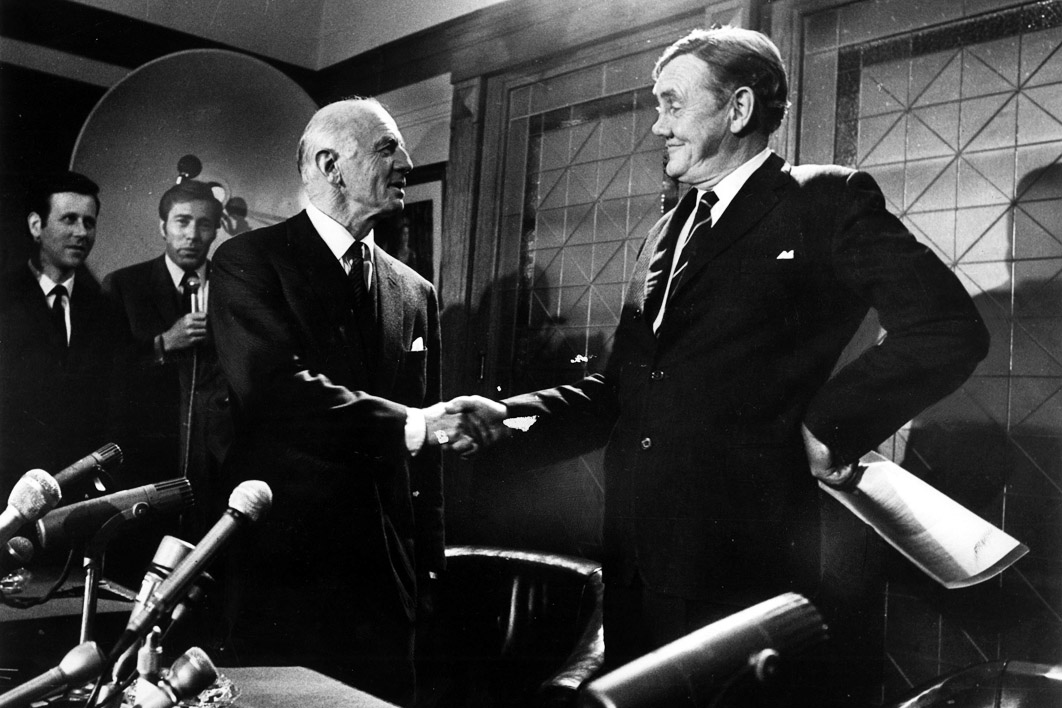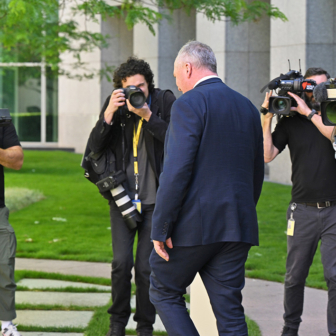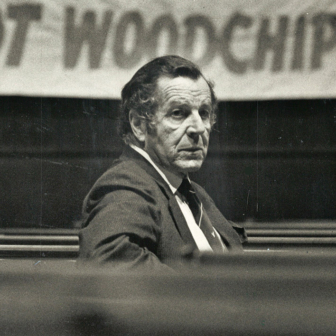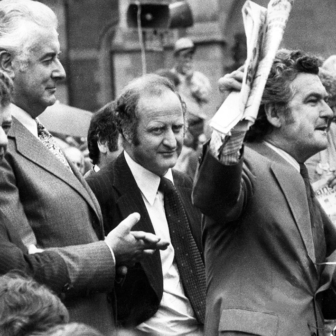Malcolm Turnbull’s replacement as prime minister by Scott Morrison was the eighteenth successful leadership “coup” in a major governing party, federal or state, over the past half century. Of the seventeen previous cases, twelve were followed by electoral defeat and three resulted in the government losing its parliamentary majority but surviving as a minority administration. In only two cases did the government retain a parliamentary majority at the next election. The way these coups unfolded highlights the size of the task facing the federal Coalition following its casting off of Turnbull.
Gorton–McMahon, federal Liberal, 1971: The first contemporary government leader to be overthrown by his peers was John Gorton, who had become prime minister in the political vacuum following the drowning of Harold Holt. Although he enjoyed a long political honeymoon, his government lost sixteen seats in the 1969 election. His arrogance and lack of consultation, combined with his willingness to question dearly held Liberal shibboleths, made him many internal enemies, especially on the conservative side of the party. These forces, which had been readying themselves to depose Gorton, mounted an unsuccessful post-election bid to replace him with his deputy, William McMahon. When a March 1971 crisis involving defence minister Malcolm Fraser culminated in another vote on the leadership, the numbers were tied and Gorton resigned. McMahon, this time successful, was singularly unable to unite the government, and led what may be the leakiest government in Australian history. Labor under Gough Whitlam maintained the political initiative, and in December 1972 twenty-three years of Coalition rule came to an end.
Lewis–Willis, NSW Liberal, 1976: When Robert Askin retired after a decade as premier of New South Wales, most observers assumed his competent but colourless deputy Eric Willis would succeed him. Instead, in a major shock, Willis was defeated in the ballot by another minister, Tom Lewis. Lewis almost immediately created controversy, refusing to follow convention and allow a Labor senator to replace Labor’s Lionel Murphy when he was appointed to the High Court. After a series of other needless controversies followed, the Liberals turned to Willis in an ambush that blindsided Lewis. The government had already lost a lot of ground, its federal Liberal counterpart was unpopular, and Willis had the misfortune to face a very skilled campaigner in Labor’s Neville Wran, who won a one-seat majority for his party just six months after federal Labor had been thrashed in the 1975 election.
Lowe–Holgate, Tasmanian Labor, 1981: The Tasmanian Labor government was split over the Franklin Dam, a scheme opposed by environmentalists and supported by pro-development forces. Labor premier Doug Lowe, sympathetic to the environmentalists, was unable to overcome the internal divisions in the government. Having been overthrown, he moved to the crossbenches, and Labor went on to a decisive election defeat.
Hamer–Thompson, Victorian Liberal, 1981: The once highly popular premier of Victoria, Dick Hamer, had been weakened by lands scandals involving the government’s planning and housing ministries, and by a group of rebellious younger MPs who saw deregulation as the only way to reinvigorate the state economy. He resigned under pressure, only to be replaced by his loyal deputy, Lindsay Thompson. The government suffered the costs of upheaval without the benefits of renewal, and lost at the election to John Cain’s Labor the following year.
Bjelke-Petersen–Ahern, Queensland National, 1987: After the huge damage of the long-running Fitzgerald royal commission — sparked by revelations of police and government corruption scandals on ABC’s Four Corners — and the collapse of premier Joh Bjelke-Petersen’s Joh for PM campaign, the National Party government was in disarray. Typically, the premier’s fall was both unprecedented and farcical: cabinet finally moved to oust him, but he refused to leave the premier’s office and face a forced resignation. Eventually he surrendered, and Mike Ahern began what he hoped would be a reformist government.
Ahern–Cooper, Queensland National, 1989: Mike Ahern’s government included a large number of Joh loyalists. It was internally split about the direction the government was taking, and was still behind in the polls. Before Ahern had to face the electorate, Russell Cooper led a successful coup. The Cooper government was soundly defeated by Wayne Goss’s Labor Party at the following election.
Cain–Kirner, Victorian Labor, 1990: During his third term as premier, John Cain’s government was engulfed by problems and facing greater internal indiscipline. Meanwhile, the public service unions mounted a militant campaign that greatly inconvenienced the public. It suddenly emerged that three large state-based financial corporations — the Victorian Economic Development Corporation, the Tricontinental bank and the Pyramid Building Society — faced large debts, with government’s responsibility and/or liability at least arguable. In Cain’s view, the decline in talent in cabinet and re-assertion of factional considerations made it difficult to respond effectively. When Joan Kirner took over, she blithely ignored the growing budget problems. Liberal leader Jeff Kennett scored a decisive victory two years later and launched a stinging campaign of budget cutbacks.
Dowding–Lawrence, WA Labor, 1990: Premier Peter Dowding and his successor Carmen Lawrence were both political victims of Brian Burke’s WA Inc scandal. It was only after Burke retired in apparent triumph that the scandals started to mount and his government’s dealings with such corrupt figures as Alan Bond and Laurie Connell proved increasingly embarrassing. Dowding managed to scrape back in the 1989 election, but many, led by WA state secretary Stephen Smith, thought he was increasingly compromised by the scandal. They supported Lawrence to replace him, and she initiated a royal commission that clarified key events, to Labor’s further embarrassment. Even if Lawrence’s performance had been brilliant, which it was not, she had little hope of winning the 1992 election.
Hawke–Keating, federal Labor, 1991: Bob Hawke had been prime minister since 1983, but his deputy, Paul Keating, was increasingly impatient to have what he saw as his turn in the leadership. After tensions following the 1988 budget, they made the so-called Kirribilli agreement, secretly stipulating that Hawke would stand down for Keating after the 1990 election. But Hawke kept finding reasons to delay, and eventually Keating went public, disclosing the agreement. After an initial tilt failed, Keating retired to the backbench, but his supporters continued to stir up trouble, and the government’s every setback was seen as evidence of how it was missing Keating. Six months later, in December 1991, the former treasurer launched a second challenge, which narrowly succeeded. The aftermath was notable for how Hawke and Keating supporters worked harmoniously together. Although the government was consistently behind in the polls, Keating’s strengths as an aggressive campaigner meant that he gradually overtook the Liberals, led by John Hewson, and managed, against most expectations, to win the 1993 election.
Brown–Olsen, SA Liberal, 1996: Somewhat like the Cain government in Victoria, the Labor government of John Bannon was overshadowed by the failure of the State Bank of South Australia. The Liberals felt that their leader, Dale Baker, was not cutting through, and he was convinced to resign. At by-elections on the same day, rivals from different party factions, John Olsen (who had given up his Senate seat to return to state politics) and Dean Brown both returned to parliament. Brown beat Olsen for the leadership, and easily won the subsequent election. But in his first term, he was challenged and defeated by Olsen, putting the government’s bitter ongoing divisions on public display. Labor exploited them, and the government was reduced to a minority government at the next election.
Iemma–Rees, NSW Labor, 2008: In a managed transition after a decade in power, Labor premier Bob Carr was replaced by Morris Iemma. Helped by an inept Liberal campaign, Labor won a fourth term, extending its time in office to sixteen years. But this fourth term was a series of disasters, with the government’s disintegration evident in many ways: the rising power of corrupt elements; the policy exhaustion; and the increasing conflicts in the parliamentary party centred around treasurer Michael Costa and key members of the state secretariat, Mark Arbib and Karl Bitar. Arbib and Bitar thought a political “cleanskin” was needed to renew the government’s prospects, so the little-known Nathan Rees became premier.
Rees–Keneally, NSW Labor, 2008: Rees’s failure to lift Labor’s polls kept him vulnerable, and he never managed to project a strong public persona. His downfall came when he moved to act against corrupt internal powerbrokers, who supported Kristina Keneally to replace him. This NSW Labor government thus matched the Queensland Nationals of 1986–89 in having two leadership coups in the one electoral cycle. At the next election, in 2011, the two-party-preferred Coalition vote was 64.2 per cent, with Labor’s primary vote shrinking to 25.6 per cent.
Rudd–Gillard, federal Labor, 2010: Kevin Rudd had huge authority within the Labor Party after the 2007 election victory. Yet he was deposed just two and a half years later, the numbers so clear he didn’t even contest the ballot. It is a telling case study in the loss of authority. Rudd’s insistence on centralised control, his inefficiency, his rudeness and his sudden changes of direction all alienated his colleagues. Unfortunately for his successor Julia Gillard’s prospects, little of this was visible to the public, so the change of leadership came as a shock. Gillard and the senior government decision-makers, overconfident of their prospects against Tony Abbott and wanting to get her a mandate as quickly as possible, rushed to the polls, but the spectre of Rudd haunted their campaign. Handicapped by their wish not to mention Rudd, they were unable to promote their own record, including Rudd’s successful response to the global financial crisis. The 2007 majority became a minority, but Labor clung to government.
Rann–Weatherill, SA Labor, 2011: The long-serving SA premier Mike Rann had signalled his intention to resign in the following year, but many felt the government was drifting and losing ground, and there was jostling over the succession. To Rann’s anger, the party forced him to resign immediately, and he was replaced by Jay Weatherill. At the next election, Labor moved from majority to minority government.
Gillard–Rudd, federal Labor, 2013: By the time Rudd replaced Gillard in the lead-up to the 2013 election, Labor’s fate was sealed. Gillard’s popularity ratings were so low by then that many turned to Rudd to “save the furniture,” as the cliché has it. His elevation was meant to rescue them from a plight that he had partly created with his long struggle against Gillard. They did have a short bounce in the polls, but Tony Abbott and the Coalition easily won the 2013 election.
Baillieu–Napthine, Victorian Liberal, 2013: Ted Baillieu’s Coalition had won a single-seat majority in the 2010 election, and the government was soon trailing in the polls. Some MPs resented what they saw as Baillieu’s combination of centralised control and indecisiveness, which magnified a parade of what in other circumstances would be minor political embarrassments. Depressed by attitudes in the party, he resigned, strongly endorsing his successor, Denis Napthine. Despite the Liberals’ attempt to minimise the change, this “circuit breaker” failed to save the government from defeat in the 2014 election.
Abbott–Turnbull, federal Liberal, 2015: Within three months of its sweeping victory, Abbott’s government dropped behind in the polls, never to recapture the lead. In February 2015, a few weeks after Abbott had given one of his new Australian knighthoods to Prince Philip, a first-term Coalition government in Queensland lost its record majority to Labor. Two backbench MPs moved a spill, but there was no declared challenger, and Abbott defeated the empty chair 61–39. Discontent continued over the way Abbott’s office related to MPs, and amid continuing internal conflict and a lack of external success, Turnbull defeated Abbott in September. Turnbull’s approval ratings were initially very high, and his leadership revived the government’s polling fortunes. The government’s optimism almost came undone at the 2016 election, and Turnbull retained government with just a single-seat majority.
This dismal record doesn’t mean that those governments would have survived if there had been no leadership coup, of course. Many, but far from all, of the rebellions were driven by electoral pragmatism, and often it was an already poor polling performance that made leaders vulnerable to other discontents. In six cases, in my judgement, the leadership change — to Willis, Ahern, Lawrence, Keating, Weatherill and Turnbull — actually boosted the government’s electoral hopes.
A change in leaders is often followed by a polling bounce, only for the figures to return to a losing pattern in the longer run. Unresolved policy differences resurface; old (and new) divisions take on a sharper edge. The biggest polling jump came when Turnbull replaced Abbott, and now the biggest drop has come after Morrison replaced Turnbull, with Monday’s Newspoll showing a two-party-preferred vote of 56–44 against the government.
A few of this half-century’s coups were fuelled principally by factional or personal factors, but few of them have been as out of step with public opinion as Turnbull’s overthrow. The drive to be rid of him — among Murdoch columnists and editors, among Sky News commentators, and among some Sydney shock jocks — has been framed as a desperate need to reclaim the “base,” to win back the soul of the Liberal Party, and to stop defections to One Nation and others on the populist right. But the idea that the Liberals must move further to the right because Labor is ahead in the polls doesn’t immediately commend itself to cooler heads.
It’s unwise to generalise about public opinion, but it seems true that the public usually reacts strongly when parties replace those who led them to power, or when they engage in internal politicking rather than governing. Governments follow a well-established post-coup script — with talk of unity, looking forward, renewal, working for the Australian people and the disastrous alternative of an opposition victory — and we are already hearing from Scott Morrison’s “Next Generation” along these lines. But the damage done to the government’s electoral standing over the past week will not easily be reversed. ●




